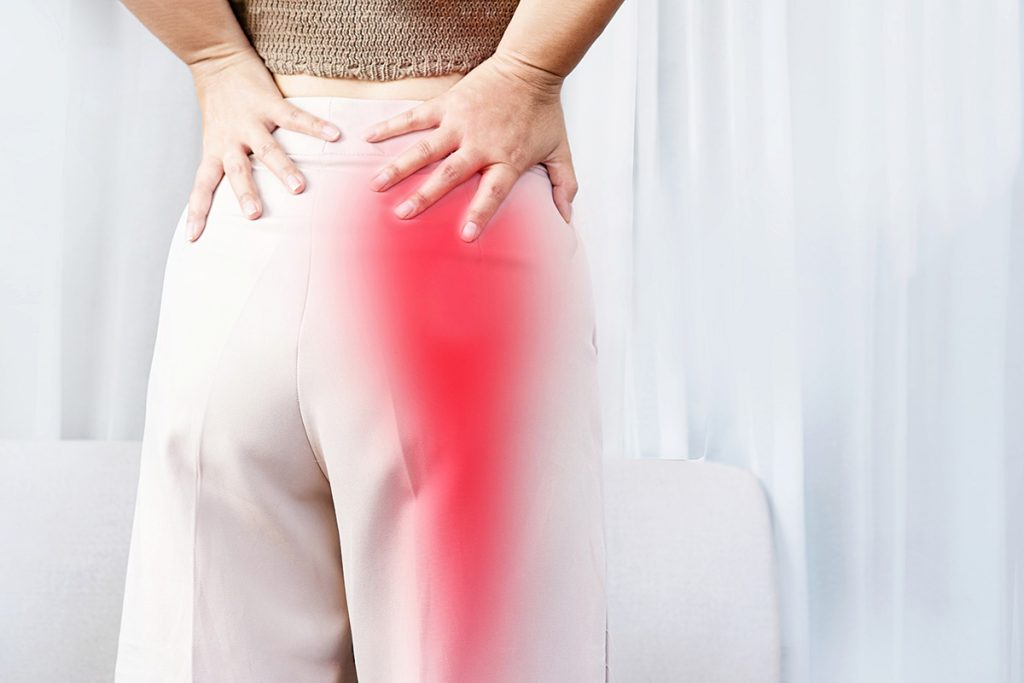
Sciatica is a common condition that affects millions of people worldwide. It is characterized by pain that radiates along the sciatic nerve, which runs from the lower back down through the buttocks and into the legs. Sciatica can be incredibly painful and disruptive to daily life.
However, individuals can employ various strategies and approaches to help alleviate the discomfort associated with sciatica. Keep reading to explore these strategies, which range from conservative treatments to lifestyle adjustments and specialized exercises.
Understanding Sciatica
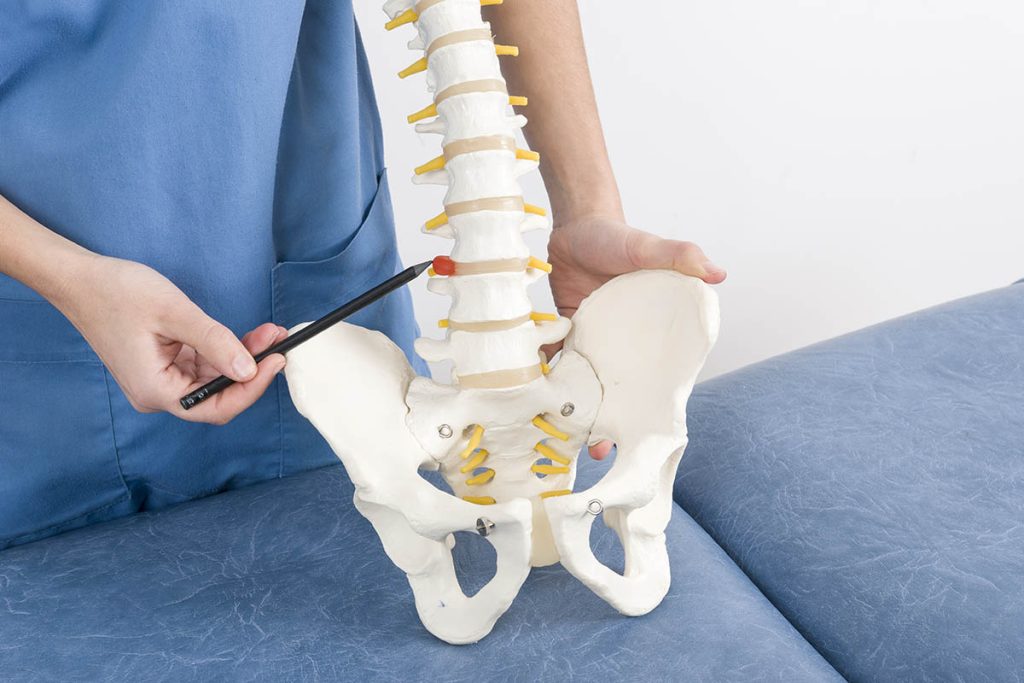
Before delving into strategies for managing sciatica, it’s essential to have a basic understanding of the condition. Sciatica typically occurs when the sciatic nerve is compressed or irritated. This compression can result from various underlying causes, such as a herniated disc, spinal stenosis, or even muscle spasms.
The most common symptom of sciatica is pain, which can range from mild to excruciating and may be accompanied by tingling, numbness, or weakness in the affected leg. Sciatica pain often follows a path down the back of the thigh and into the calf and foot.
Managing Sudden Sciatic Flare-Ups: Tips for Quick Relief

Sciatic pain can be excruciating, and a sudden flare-up can catch you off guard. The sharp, shooting pain radiating down your leg is physically distressing and can disrupt your daily life. While it’s essential to consult with a healthcare professional for a comprehensive treatment plan, there are several steps you can take to handle sudden sciatic flare-ups and find relief.
1. Rest and Change Your Position

The first and most crucial step when a sciatic flare-up strikes is to find a comfortable position and rest. Avoid activities that exacerbate the pain, such as prolonged sitting or standing. Lie down on your back with a pillow under your knees to alleviate pressure on the sciatic nerve. Changing your position frequently can prevent stiffness and reduce discomfort.
2. Apply Heat or Cold Therapy

Both heat and cold therapy can effectively manage sciatic pain, but the choice depends on personal preference. Applying a cold pack can help reduce inflammation and numb the area, providing temporary relief. Alternatively, a heating pad or warm compress can relax tense muscles and increase blood flow, soothing the pain.
3. Gentle Stretches and Exercises

While staying immobile during a sciatic flare-up may be tempting, gentle stretches and exercises can help alleviate the pain. Simple movements like knee-to-chest stretches and piriformis stretches can help loosen the muscles surrounding the sciatic nerve. Be cautious and avoid overexertion, as this can worsen the condition.
4. Over-the-Counter Pain Medications

Non-prescription pain relievers like ibuprofen or acetaminophen can be useful in managing acute sciatic pain. However, it’s essential to consult with a healthcare professional before taking any medication, especially if you have underlying health conditions or are taking other medications.
Exercises for Sciatica Relief
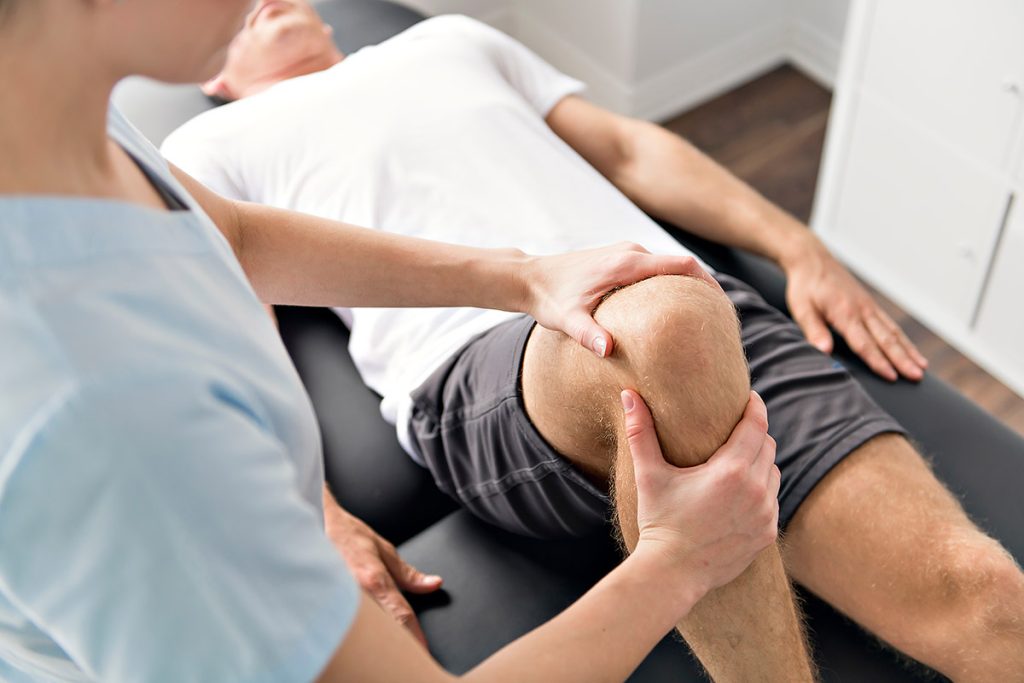
In addition to the abovementioned strategies, specific exercises can help alleviate sciatica pain and prevent its recurrence. It’s important to note that you should consult with a healthcare professional or physical therapist before starting any exercise regimen for sciatica, as the suitability of exercises may vary based on the underlying cause and severity of your condition.
Here are some common exercises for sciatica relief:
1. Pelvic Tilts
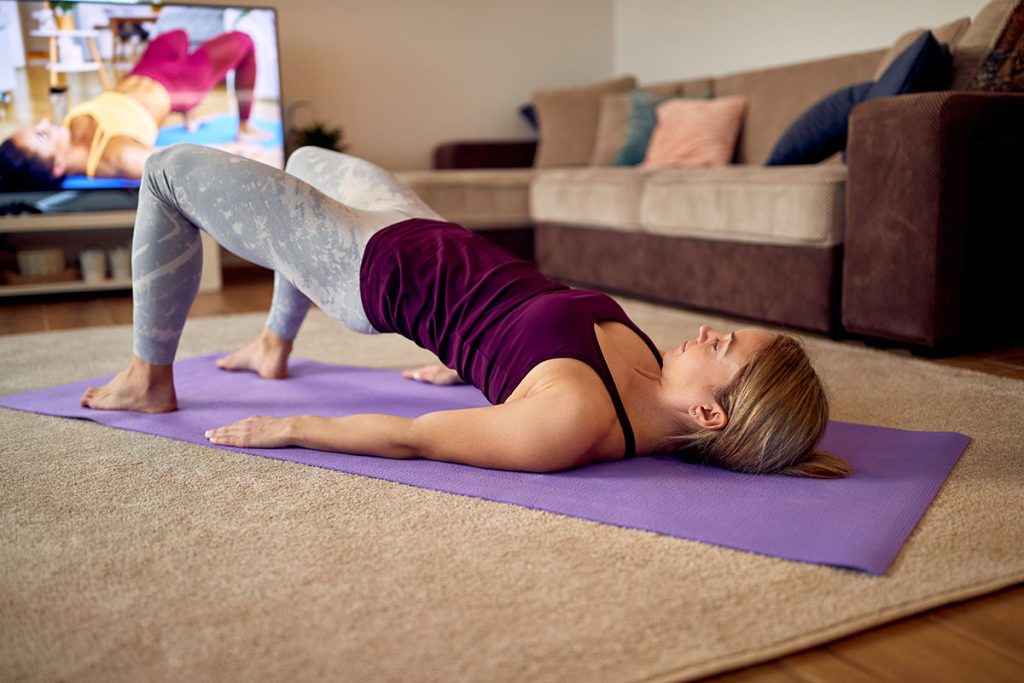
Lie on your back with your knees bent and feet flat on the floor. Tighten your abdominal muscles and tilt your pelvis upward, then relax. Repeat several times.
2. Knee-to-Chest Stretch

While lying on your back, bring one knee toward your chest, holding it with both hands. Hold for 20-30 seconds, then switch legs.
3. Child’s Pose

Kneel on the floor and sit back on your heels, then reach your arms forward and lower your chest to the floor. Hold for 20-30 seconds.
4. Piriformis Stretch

Lie on your back with knees bent, cross one ankle over the opposite knee, and gently pull the knee toward your chest. Hold for 20-30 seconds, then switch legs.
5. Hamstring Stretch
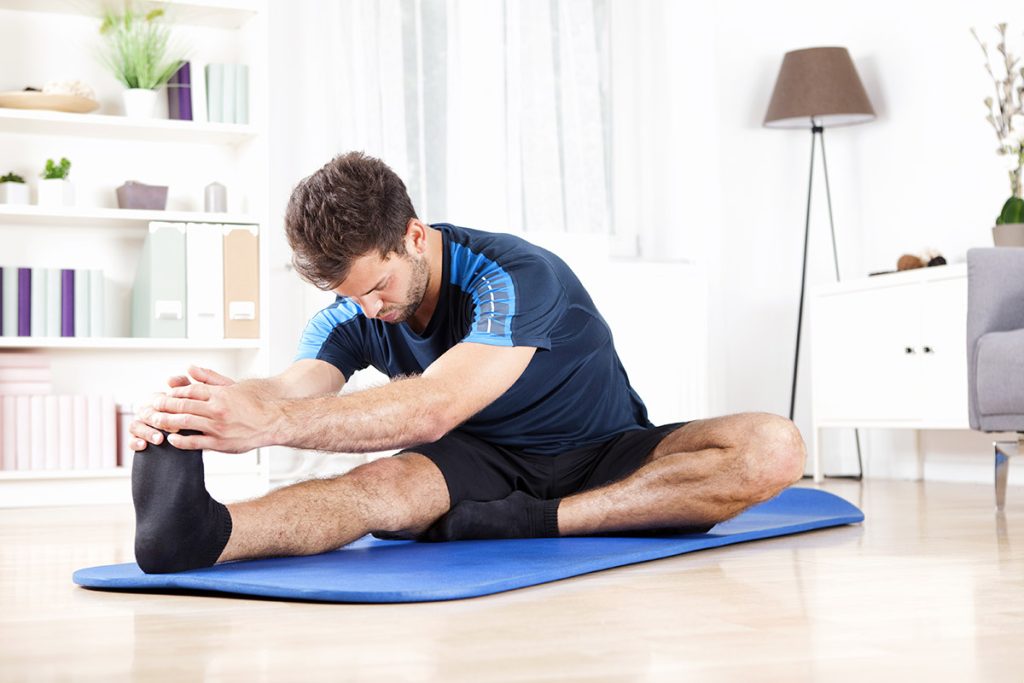
Sit on the floor with one leg extended straight and the other leg bent so that the sole of your foot is against your inner thigh. Lean forward, reaching for your toes on the extended leg.
6. Aerobic Exercise

Low-impact aerobics activities like walking, swimming, or cycling can help improve circulation, reduce inflammation, and maintain overall spinal health.
Strategies for Managing Sciatica

Maintain Good Posture: Proper posture is crucial for preventing sciatic flare-ups and reducing their severity. When sitting, use a chair with lumbar support and ensure your feet are flat on the ground. When standing, distribute your weight evenly between both legs. Paying attention to your posture can reduce the pressure on your lower back and sciatic nerve.
Lifestyle Adjustments: Lifestyle changes can significantly impact sciatica pain. Maintaining a healthy weight through diet and exercise can reduce the load on the spine while quitting smoking can improve circulation and overall spinal health.
Supportive Devices: Some individuals find relief using devices such as lumbar pillows or back braces. These can help maintain proper spinal alignment and reduce pressure on the sciatic nerve.
Alternative Therapies: Complementary therapies like acupuncture, chiropractic care, and massage therapy have shown promise in alleviating sciatica pain for some individuals. These therapies can help reduce muscle tension and promote relaxation.
Consult a Healthcare Professional: The first step when dealing with sciatica pain is to seek medical advice. A healthcare professional can diagnose the underlying cause of your sciatica and recommend appropriate treatment options. They may order imaging tests like MRIs or X-rays to better understand your condition.
Supplement Ingredients for Sciatica Relief: Exploring Natural Options

Sciatica is a condition characterized by excruciating pain that radiates along the sciatic nerve, affecting the lower back, buttocks, and legs. While conventional medical treatments like pain medications, physical therapy, and surgery are often recommended, many individuals seek alternative and complementary approaches to manage their sciatica symptoms.
Recently, there has been growing interest in natural supplements that may help alleviate sciatica pain and discomfort.
Boswellia Serrata, or Indian frankincense, is a tree resin used for centuries in traditional medicine. The active compounds in Boswellia serrata, known as boswellic acids, have anti-inflammatory properties. Some studies suggest that Boswellia supplements may help with occasional sciatica discomfort. (1-3)
Vitamin B12 is crucial for maintaining nerve health and function. A deficiency in this vitamin can lead to nerve-related symptoms, including tingling and numbness often associated with sciatica. Vitamin B12 supplements may help support nerve health and alleviate discomfort. (4-5)
Alpha-lipoic acid (ALA) is thought to help alleviate occasional sciatica discomfort by reducing oxidative stress, which can contribute to nerve damage. While research on ALA for sciatica is limited, some studies have shown promising results in reducing pain and improving nerve function in patients with neuropathic pain conditions, including sciatica. (6-8)
Stonehenge Health Dynamic Nerve offers a ray of hope in your quest to relieve occasional sciatic discomfort. * Our formula is carefully crafted with ingredients like alpha-lipoic acid (ALA), vitamin B12, and Boswellia Serrata, all known for their potential to support the root causes of sciatic comfort. * When these powerful natural elements come together in Dynamic Nerve, they create a harmonious blend that could potentially ease the challenges of sciatic discomfort. * We’re excited to provide you with a promising supplement that takes a traditional approach to help you manage this tough condition.
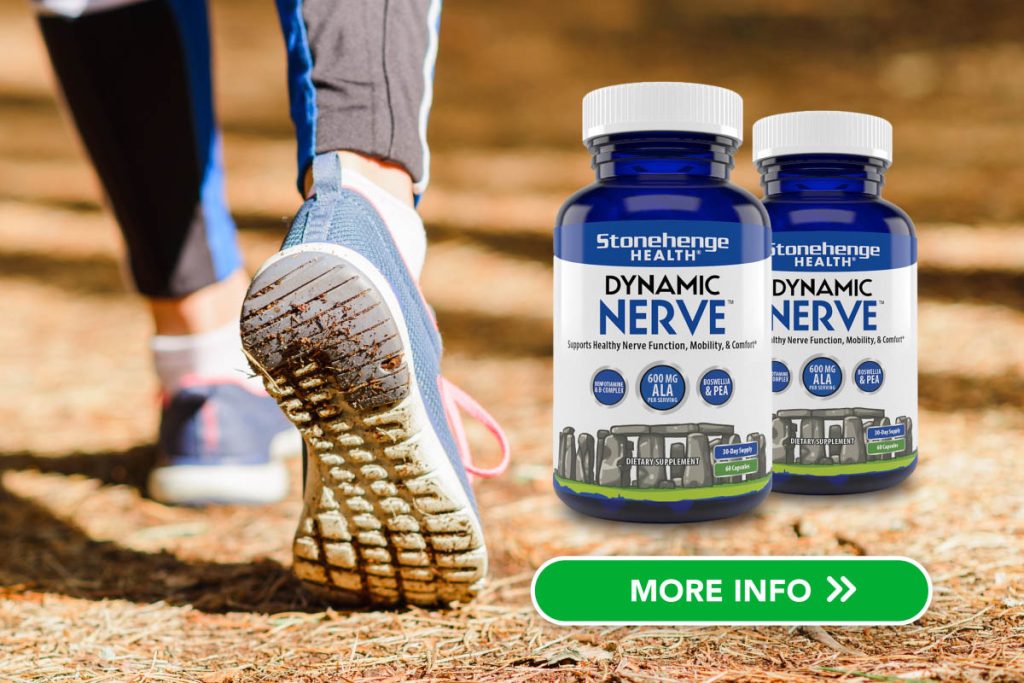
Sources:
1. Adriana G Guimarães, et al. (2014) Expert Opinion on Therapeutic Patents, 24:3, 243-265
2. Jiang XW, et al. Neural Regen Res. 2018 Mar;13(3):484-491.
3. Siddiqui MZ. Indian J Pharm Sci. 2011 May;73(3):255-61.
4. Mahmood, A. (2014). Clinical Significance of Serum Vitamin B12 Levels in Patients with Sciatic Pain. Journal of Surgery Pakistan (International), 19(4), 145-147.
5. Rathod, R., Deshmukh, J., & Patel, R. (2016). Study of Vitamin B12 Deficiency and Peripheral Neuropathy in Patients of Sciatica. Journal of Clinical and Diagnostic Research, 10(7), CC01-CC03.
6. Konrad T, Vicini P, Kusterer K, et al. Alpha-lipoic acid treatment decreases serum lactate and pyruvate concentrations and improves glucose effectiveness in lean and obese patients with type 2 diabetes. Diabetes Care. 1999;22(2):280-287.
7. Ruhnau KJ, Meissner HP, Finn JR, et al. Effects of 3-week oral treatment with the antioxidant thioctic acid (alpha-lipoic acid) in symptomatic diabetic polyneuropathy. Diabet Med. 1999;16(12):1040-1043.
8. Winkler G, Pál B, Nagybéganyi E, Ory I, Porochnavec M, Kempler P. Effectiveness of different benfotiamine dosage regimens in the treatment of painful diabetic neuropathy. Arzneimittelforschung. 1999;49(3):220-224.
* These statements have not been evaluated by the Food and Drug Administration. This product is not intended to diagnose, treat, cure or prevent any disease.














